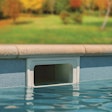
Still in development is APSP-12, Aquatic Safety and Risk Management, which will address safety in the "design, construction, alteration, replacement, operation, management and regulatory oversight of aquatic facilities in the United States."
Why are documents that are hammered out in conference rooms far from your dealership, service route or job site important? Because once a formal standard has been approved, local and state governments look to that document as the basis for their ordinances and codes.
For instance, notes Carvin DiGiovanni, senior technical director, APSP, "A lot of states have already adopted state codes for pool and spa safety that are pretty consistent with our number 8 (APSP/ANSI-8) standard." As these standards inform law across the country, the new laws guide builders and retailers in their safety product choices, building techniques and emphasis. And finally, manufacturers (such as those represented in the product section that follows) react with new designs and stepped up production to satisfy the markets created by this demand. Thus the industry is bound together, from standards-committee deliberations to product installation.
In addition to spurring demand, uniform national standards encourage economic growth. With consistent builder codes across a region, a company can branch out to other cities and states more easily, knowing that expectations will be the same.
Layered On The Sides
Rippling in effect across the nation like waves across a placid pool has been ANSI-8, the pool barrier standard, which was approved just over two years ago. While its true the concept of layers of protection for swimming pools and spas has been around for a long time, ANSI-8 gives the idea specific language and instruction.
Without exception, pools must have a barrier, consisting of a "picket/ ornamental fence, chain link fence, welded wire fence, mesh restraining barrier/fence, stand alone wall, screen enclosure, or building wall." The standard makes clear that other devices, such as pool alarms and detectors "are not to be used in place of barriers," only as a supplement to them.
Most important are the detailed requirements spelled out in the standard for each type of barrier, such as the four-inch maximum spacing between vertical pickets on a fence, and the 65 percent open area demanded for visibility to the pool from outside the fence, to name just two of many. The specifications of each type of barrier are likewise delivered in detail, always with a view to prevent access either over, under or through.
Prevent Entrapment
As opposed to preventing access to the water, ANSI-7, passed a year and a half ago, deals with the specific issue of suction entrapment in pools and spas. It categorizes five types of entrapment (hair, limb, body suction, evisceration and mechanical) and sets up the general requirements for designing and maintaining a circulation system to prevent them.
It is an excellent guide for engineering pool plumbing, with clear instruction on what is safe for each component. It contains acceptable flow rates for different parts of the plumbing and specific directions for plumbing design. For instance, for a pool with dual outlets in parallel with one pump, the outlets must be at least 3 feet apart.
More than once in the document is written this clear admonishment: "there is one overriding conclusion that is inescapable; there is no 'back up' for a missing suction outlet cover. If any suction outlet cover is found to be damaged or missing, the pool/spa must be closed to bathers immediately."
Both documents, APSP/ANSI-7 and APSP/ANSI-8, are the product of careful and protracted thought by industry experts and should be considered essential reading for anyone involved in pool and spa design and retail.
And with new standards such as ANSI-12 and others in the offing, there's an opportunity to get involved with creating code by chiming in during the comment period or even serving on a committee. Despite the fact that they make rather tiresome reading compared to the sports page, standards are likely to impact your business.












































